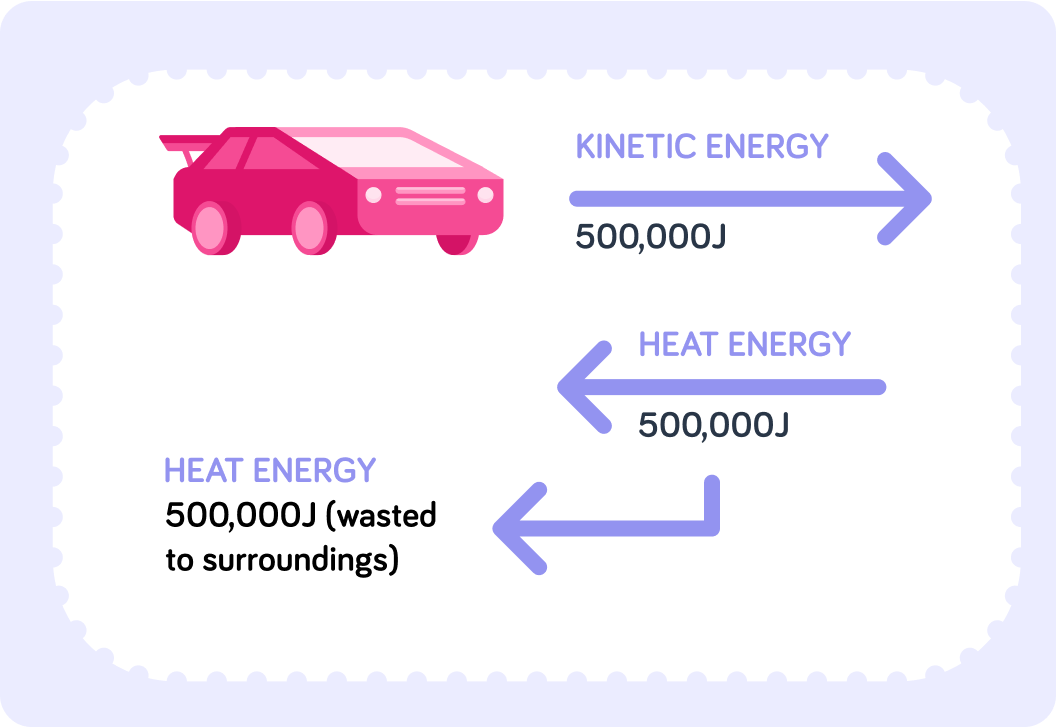YOU ARE LEARNING:
Changes in Energy

Changes in Energy
You will learn to analyse and represent energy transfers within a system, using real world examples.
The following process takes place inside a light bulb: electrical energy→heat energy+light energy. What do you think we might call this process?

Can you guess which of the following is not an example of energy transfer?

An appliance converts 250000J of electrical energy into 220000J of useful heat energy. Can you guess what this device might be?

Thinking of the example of the kettle, can you guess what happened to the remaining 30000J of input energy?

Which of the following statements do you think might be true for an object that is projected upwards into the air? Pick all the options that you think are correct.

You can select multiple answers
The above diagram shows the path of an object projected up in the air and the transfer of kinetic energy (KE) and gravitational potential energy (GPE).
The kinetic energy of the object is zero at the maximum height - just before the object falls back down. The path of the trajectory follows the shape of a parabola.

Do you think this energy transfer diagram describes a car accelerating or braking?


An object is accelerated by a constant force and **** has the energy transfer: chemical→kinetic+heat
Could this energy transfer describe an accelerating car?

Which of the following energy transfer processes do you think best describes a car hitting a solid, immovable brick wall?

Energy transfers are sometimes described using diagrams. How might an energy transfer diagram be useful?

Can you guess which of the following details might be included in an energy transfer diagram?

What other information might be useful in an energy transfer diagram?

You can select multiple answers
